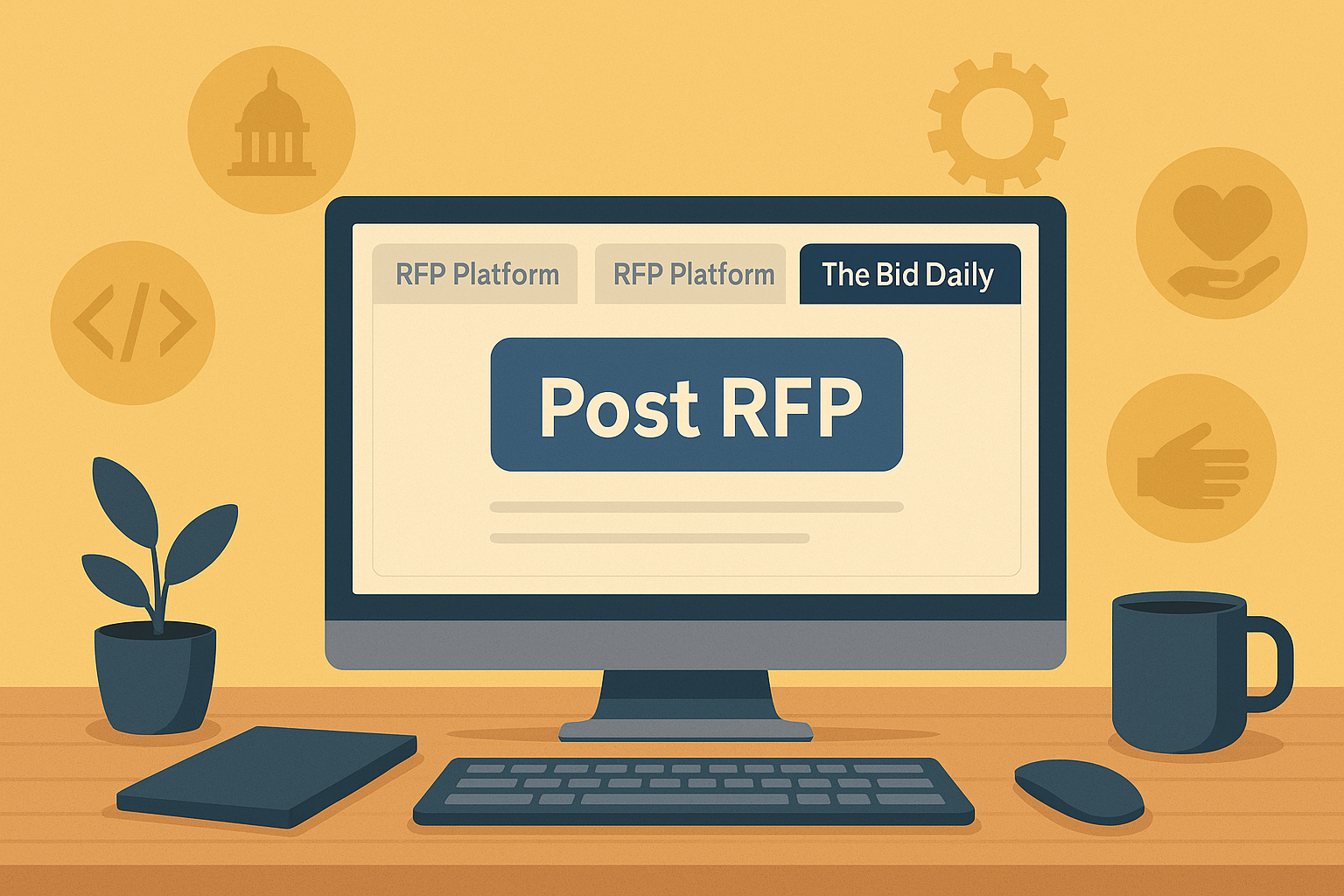In today’s digital-first world, organizations across sectors are issuing Technology RFPs at an accelerating pace to find the right partners for everything from website redesigns and cybersecurity audits to custom application development. For small and medium-sized businesses, responding to a Technology RFP is not just an opportunity to win a project—it’s a path to long-term partnerships and market expansion.
At The Bid Daily, we believe that with the right preparation and approach, any qualified business can confidently pursue and win Technology RFPs. Here’s what you need to know.
1. What is a Technology RFP?
A Technology RFP (Request for Proposal) is a formal document issued by public agencies, nonprofits, and private enterprises to solicit proposals from qualified vendors for technology-related services or products. This could include IT consulting, software development, infrastructure upgrades, or digital transformation initiatives.
Understanding the scope and intent of the RFP is the first step toward submitting a compliant and competitive response.
2. Why Technology RFPs Matter
Technology is a cornerstone of operational efficiency, citizen engagement, and organizational growth. That’s why government agencies alone allocate billions each year to fund tech initiatives. For instance, state and local governments frequently publish Technology RFPs to modernize legacy systems, redesign websites, implement cloud solutions, or enhance cybersecurity infrastructure.
Responding to these RFPs isn’t just about revenue—it’s about becoming a part of meaningful innovation that impacts real people.
3. How to Find the Right Opportunities
Finding the right Technology RFP can be a challenge if you’re scanning hundreds of websites daily. That’s why platforms like The Bid Daily offer curated, up-to-date listings of open RFPs, helping vendors save time and focus only on the bids that align with their services.
Click here to subscribe to The Bid Daily.
4. Responding to a Technology RFP: Best Practices
Here’s how to stand out when responding to a Technology RFP:
-
Start with a clear strategy: Before you begin writing, identify the client’s main pain points and align your solution with their goals.
-
Use clear, concise language: Not every evaluator will have a tech background. Avoid jargon and explain your solution in business terms.
-
Demonstrate credibility: Showcase relevant case studies, certifications, and success metrics to back up your expertise.
-
Highlight security standards: Address topics like data privacy, encryption protocols, and compliance with regulations like HIPAA or SOC 2.
5. Streamline Your Proposal Process
Efficiency is key. Build a content library with reusable assets—team bios, past project summaries, insurance certificates, etc.—so you can assemble responses faster. Invest in proposal tools or templates that allow you to present information in a professional and visually clean format.
Check out our proposal template for website redesign RFP, click here.
6. Don’t Overlook the Q&A Period
Most Technology RFPs include a window where vendors can ask clarifying questions. Use this time to get specific on project requirements, proposal formatting, or evaluation criteria. Smart questions show you’re engaged and thoughtful.
7. Follow Submission Instructions to the Letter
Many vendors lose out on great opportunities by missing a deadline or submitting incomplete documents. Double-check file formats, delivery instructions, and required attachments before you hit send.
Final Thoughts
The world of Technology RFPs is full of potential—especially for businesses that know how to navigate the process with confidence. At The Bid Daily, we’re committed to helping you access to the RFPs that matter most to your growth.
Whether you’re new to bidding or a seasoned proposal writer, keep an eye on our listings and resources. There’s always a new opportunity waiting for you.






